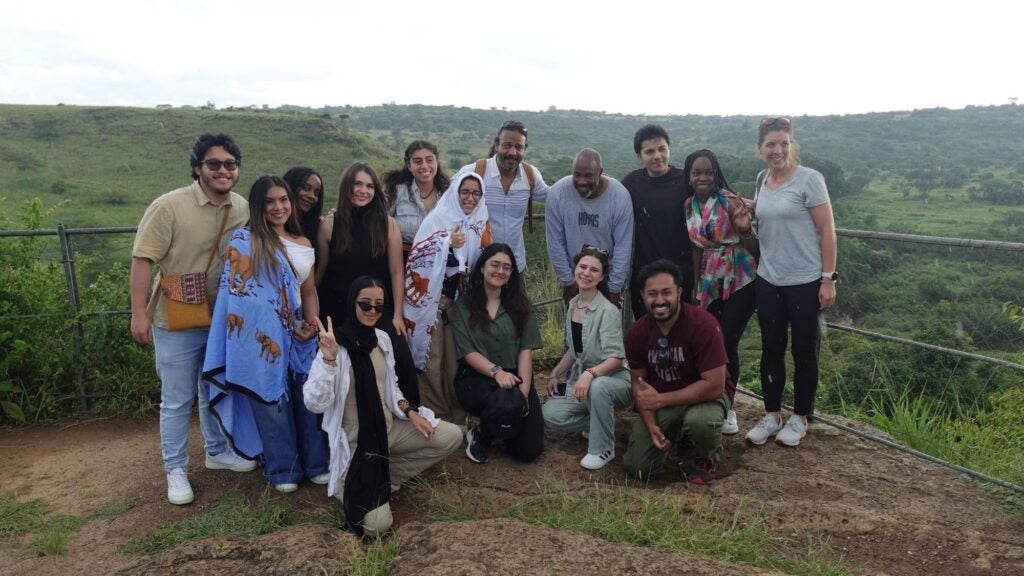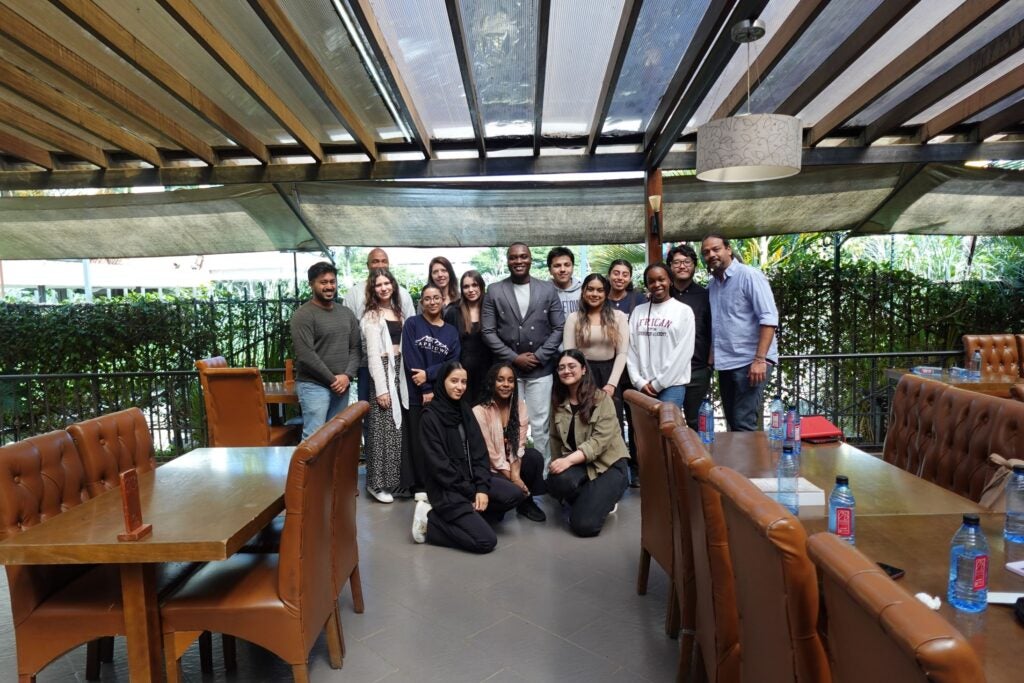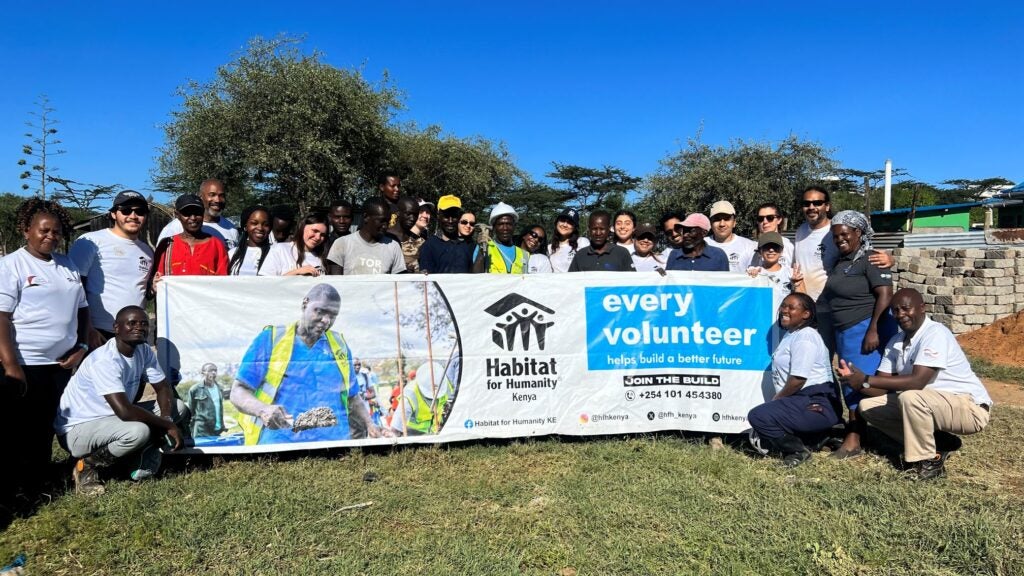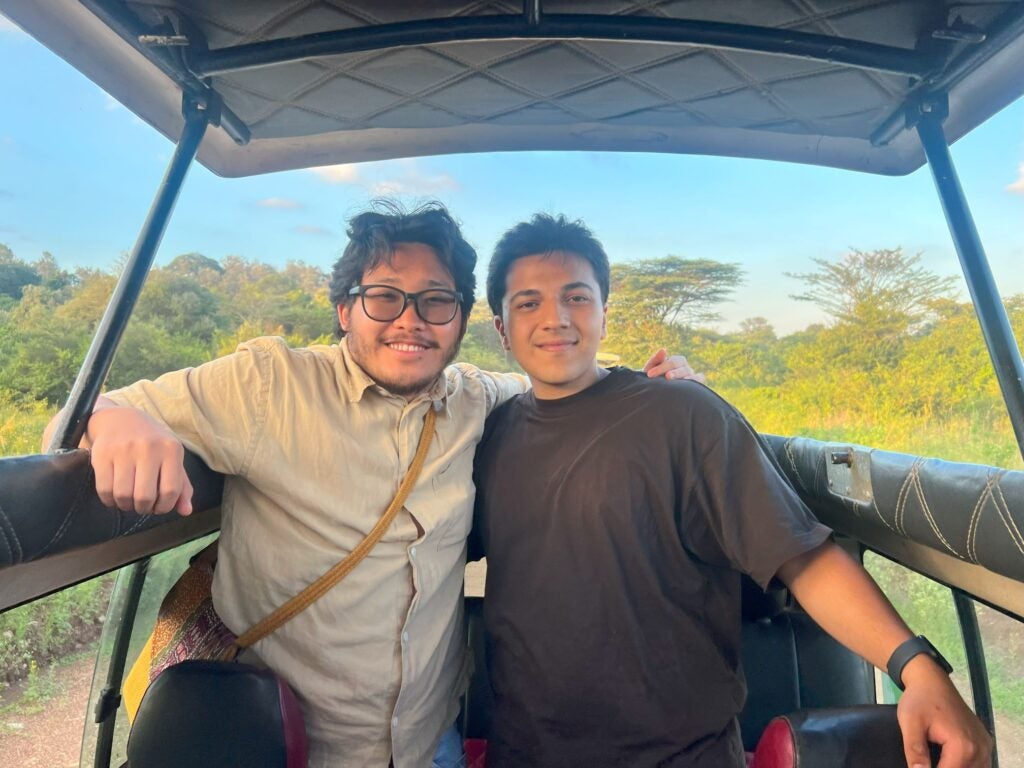A Journey to Kenya Transforms GU-Q Students

In May 2024, a group of students from Georgetown University in Qatar (GU-Q) embarked on a trip to Kenya, expecting an adventure. They did not anticipate a journey that would profoundly reshape their understanding of community and social impact.
“For most of us, the most exciting part was simply going to Kenya,” said Saim Haider (SFS’26), who signed up for the Community Education Program (CEP) trip to study social entrepreneurship and looked forward to travel, safaris, and cultural experiences.
However, reality hit swiftly upon arrival. “We landed around 7 a.m., and went straight to the hotel for breakfast and meetings,” Saim recounted. Their first meeting, with a World Bank representative, provided a crash course on Kenya’s socioeconomic landscape, setting the tone for their experience.
The CEP trip, rooted in Georgetown values, merges academic learning with practical field experiences. Students tackle real-world challenges, fostering global citizenship through critical thinking and cross-cultural problem-solving. In Kenya, they delved into the nation’s vibrant culture and entrepreneurial spirit, focusing on social entrepreneurship and community development.
Learning and Engaging in Nairobi

The students engaged directly with local communities, exploring sustainable solutions to societal challenges. They interacted with entrepreneurs, visited social enterprises, and participated in workshops emphasizing innovative approaches to social issues.
In Nairobi, they initially plunged themselves into Kenya’s multifaceted context to understand the foundations of social entrepreneurship. “We designed the program to give students a broad understanding of Kenya’s history, politics, economy, sociology, tribes, and nation-building before diving into specific issues,” explained Malak Elmoh (SFS’21), a Student Development Officer at GU-Q.
“Each meeting allowed us to ask questions and gain insights. Everyone on the CEP was working on something impactful, from accessibility projects to agriculture-based social entrepreneurship,” explained Saim.
One standout experience was at Pallet Café, a social enterprise employing deaf or hard-of-hearing people. “The owner emphasized that he wasn’t selling the idea of helping people but selling good food with the added narrative of supporting the hearing-impaired community,” said Saim, inspired by the café’s regular business approach.
Building Foundations in Nanyuki
From Nairobi, the students traveled to Nanyuki to participate in Habitat for Humanity’s volunteer program, which helps to build houses for people in poor communities. Aya Hassan (SFS’25) was deeply touched by helping construct a house for a single mother with five children. “Seeing the family that would live in the house made it personal,” she said.
Aya and her peers worked on the home’s foundation, with village residents joining the effort. “Most of the village, primarily women in their 50s and 60s, worked tirelessly. They brought their grandkids, dug with shovels, and carried bricks. Their dedication was humbling.”

The sense of communal support, so integral to Kenyan culture, was evident throughout their stay. “Neighbors brought us food, supported us, and shared their lives,” Saim observed. The students’ experiences at GU-Q, where they regularly engage with diverse cultures, enhanced these interactions, helping them adapt to different backgrounds and opinions.
Aya also spoke of meeting the Nareto Women Self Help Group, known for their beadwork and entrepreneurship that challenges gender roles. “It was transformative,” she said. The group regularly makes the 392 km round trip to Nairobi to sell their crafts in the open market. “They are true feminists, breaking taboos and proving women can support their families and communities.”
Bringing Lessons Home
Back at GU-Q, the students will be sharing their experiences through presentations and discussions, enriching the community’s understanding of global social entrepreneurship. They will also undertake a community project, turning their individual experiences into a collective educational resource. “Our main priority is to push students outside their comfort zones,” said Malak. “The CEP extends beyond the trip itself. It’s about implementing what they’ve learned on campus and within their communities.”

The trip wasn’t all work, though—the students also enjoyed the much-anticipated safari. “We saw a lot of zebras, buffalo, rhinos, and hippos. The giraffes were majestic. It was a wonderful experience,” Saim said, describing the safari as a highlight that showcased Kenya’s rich biodiversity. “I wish we had seen lions; they were on my list,” he added ruefully.
Reflecting on the experience, the students highlighted the profound lessons about community and social impact. “My biggest takeaway was the strong sense of community we saw there, which contrasts with the lack of it in arguably more developed places,” Saim noted. For Aya, the key lesson was the importance of intentional collective work and engaging with people outside her usual circles. Ultimately, “Everyone came back a different person,” she said.